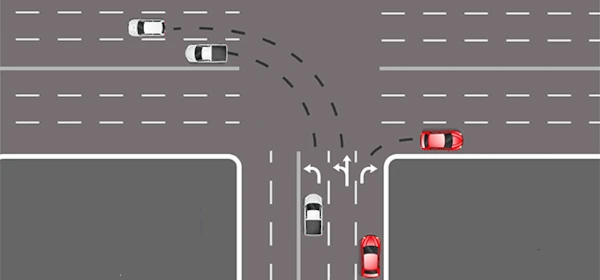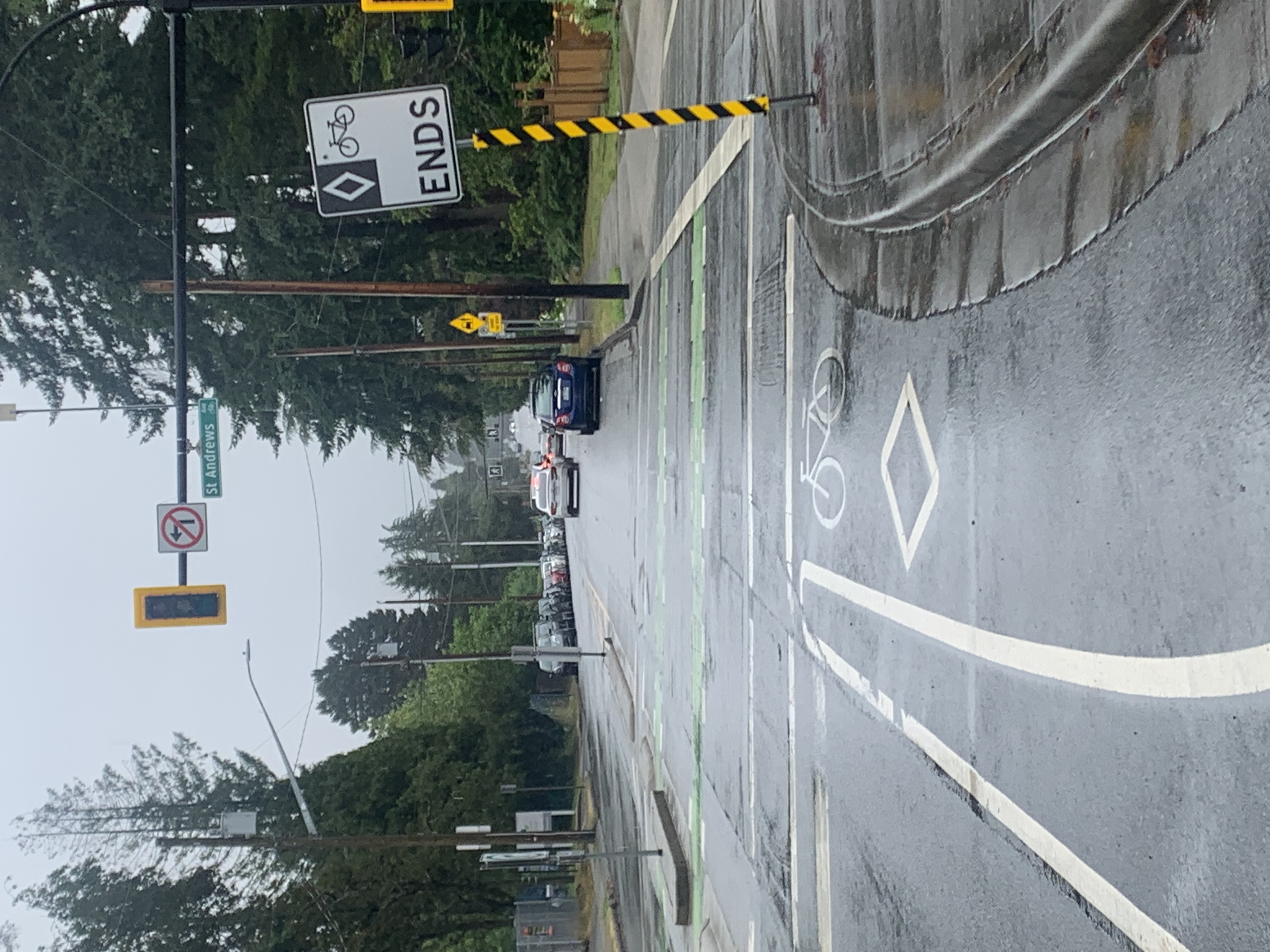 "Tell them that they need to be in the proper lane before they turn" says one reader. Equally important is the need to end up in the proper lane after turning. Attention to detail here provides for a smooth flow of traffic and less chance of being involved in a collision.
"Tell them that they need to be in the proper lane before they turn" says one reader. Equally important is the need to end up in the proper lane after turning. Attention to detail here provides for a smooth flow of traffic and less chance of being involved in a collision.
Roadway Defined
The definition of roadway is important to this discussion. This is the portion of the highway that is improved, designed or ordinarily used for traffic, but does not include the shoulder. In the case of a paved highway, it is the portion between the lines, or in the case where there is no line on the right side, between the lines and the edges of the pavement.
Turning Right at an Intersection
Drivers intending to turn right at an intersection must approach and make the turn as close as possible to the right hand curb or edge of the roadway.
Turning Left at an Intersection
Drivers intending to turn left at an intersection must approach in the lane nearest to the centre line keeping to the right of that line, turn to the left of the centre of the intersection, and leave the intersection to the right of the centre line.
Turns Between Intersections
Turns made to leave the highway at places other than an intersection require that the driver approach the turn in the same manner as turns made at intersections.
The First Available Lane
In all of the cases outlined above the driver will be in the first lane available to the intended direction of travel when the turn is completed.
Multiple Turn Lanes

Some larger intersections have more than one lane for a left or right turn. A common mistake is to turn directly into lanes other than those designated.
Decide on which of the two turn lanes you need to use as you approach the intersection. After making your choice, you always exit the intersection in the same lane that you entered it in.
Learn More
- Turning at Intersections - Section 165 Motor Vehicle Act
- Turning Left Other Than at Intersection - Section 166 Motor Vehicle Act
- Turning Right Other Than at Intersection - Section 167 Motor Vehicle Act
- Rules of the Road - Chapter 4 Learn to Drive Smart
Share This Article
Where in law does it say "In all of the cases outlined above the driver will be in the first lane available to the intended direction of travel when the turn is completed."?
My understanding was that, on a left turn from a 2 way road to a 2 way road, you can turn into any lane as long as you exit the intersection in that lane.
- Log in to post comments
The only exception to this that I am aware of is for long vehicles such as busses or trucks pulling trailers, they are required to:
a) if there are two left turning lanes they must use the right most left turn lane.
b) if there is only one left turn lane but more than one lane on the road being turned on to they must turn into the second lane, allowing room for the back end of the vehicle to safely complete the turn and to position the vehicle in the right lane upon completion of the turn as this is the lane that larger vehicles should travel in. (This is taught in truck driving schools in BC, not all jurisdictions have this requirement)
Unfortunately, since most car drivers see professional drivers performing this required action they also think that it is ok for them to follow suit, and again another default is re-set.
- Log in to post comments
... or doesn't say.
Only left turns into a one-way street specifically require finishing in the nearest available lane. And I'm honestly not certain that it's a specific requirement for large vehicles to use the outside lane of a pair of turning lanes, though it sure as heck makes sense, and is often the only practicable way to make the maneuver.
- Log in to post comments
When turning right when a bike lane exists, it gets dicey, especially if right turns are allowed on red lights.
Which is the proper procedure:
A) Stop if required, wait for any bikes, then turn across the bike lane?
B) Move over to occupy the bike lane, stop if necessary, and turn from there?
I've been doing B) if there is a broken line between the right hand vehicle land and the bike lane, and A) otherwise.
Cyclists will swear at you regardless, but it would be nice to know what the correct way to proceed might be.
Cheers,
--BM
- Log in to post comments
All valid points worth adding to this. Burcam is right, it does depend on whether the line separating the bike lane is a solid one or not.
My thoughts are constrained by newspaper length of 250 - 300 words. I would imagine that it won't be far in the future that newspapers will either permit much more length because they are on line, or won't be a constraint because they no longer exist.
Either way as long as I don't run off at the keyboard, I'll be able to explain more fully when there are other considerations like this.
- Log in to post comments
It may be worth reminding people to signal the lane change prior to moving into the turn lane (once you are in the turn lane, I know where you're going)
- Log in to post comments
The right turn described in section 165 of the MVA tells drivers that they need to be “as far right as practicable” before turning which is the same manta extended to cyclists. No wonder there’s conflict. Furthermore many bike lanes are not dashed to allow this so drivers extend past the approach before turning (at a greater rate of speed) setting up the classic “right hook” arguably the most frequent cause of death and injury to cyclists.

- Log in to post comments
- Log in to post comments

left turns